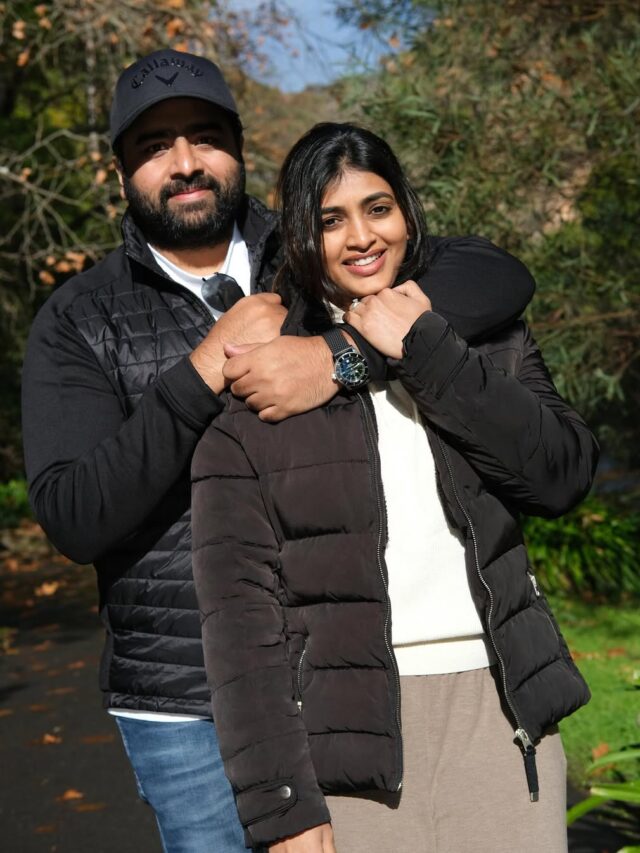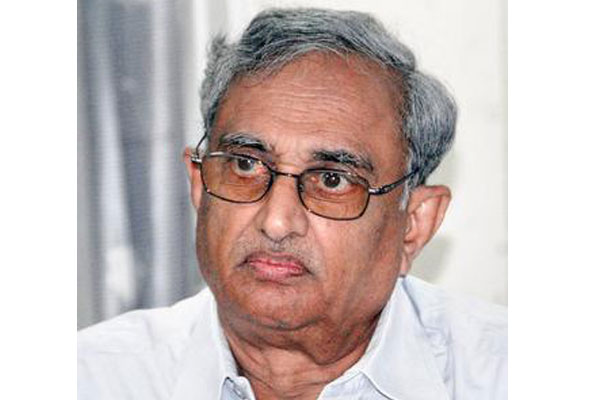Noted environmentalist and retired IAS officer EAS Sarma expressed doubts over the way the Amaravati Environmental Clearance proposal had been processed. In a letter written to B.S.S.Prasad,Member Secretary (APPCB),& Ex-officio Member Secretary (SEIAA),Hyderabad, today, he said that it appeared as though the EC proposal had been examined in an undue hurry and under duress. Sarma felt that SEIAA, instead of being guided by such a cursory EIA process, ought to have returned the proposal to SEAC for a reappraisal in a transparent manner. He we give portions of the letter:
1
“…while stipulating several salutary conditions to make the clearance appear reasonable, (SEAC) also added a wish list under the comic title “Disastrous Management”! Fortunately, SEIAA, more careful about the language, has corrected it. The fact remains that the EC, in its present format, amounts only to a vague wish list which cannot be easily enforced.
“In my view, environment impact appraisal (EIA) is a serious process stipulated as such by the Environment (Protection) Act, 1986 (EPA) and the regulations notified under it from time to time. The essence of EIA is the transparency that should govern the process, not only under the EPA but also under the Right to Information Act, 2005. Ironically, in the instant case, the whole process has remained shrouded in secrecy. APCRDA had not even uploaded to its website the EIA report prepared by the Consultant. The public could have pointed out the omissions/ commissions in that report, as the outcome of that report would touch the lives of the people residing in the area.
“Considering that Article 19 of the Constitution entitles the citizen to know and since that right stands infringed in this case, the whole process of EIA and issuance of the EC stand vitiated.
2
“General Condition (v) requires APCRDA to bring the EC and its details to the knowledge of the public as a pre-condition to the EC. In other words, the EC should be deemed to have become operational only w.e.f. the date on which it became public knowdge. As per the statement of APCRDA before the National green Tribunal (NGT), the fact that SEIAA had issued the EC was published only on 15-10-2015, in a few newspapers but that did not mean that the public became aware of the conditions attached to the EC on that date. The actual uploading of the EC took place only on 5-11-2015, that too at the instance of the NGT.
“Since the EPA requires that no construction or land levelling activity should be undertaken prior to the date on which the EC is brought into the public domain, all such activity prior to that date, if it had taken place, would be patently illegal.
“In addition, in the EC, General Condition (ix) rightly states that submission of false information for the EC would make the project proponent liable to action by way of revocation of the EC.
3
“In my view, considering that there are serious discrepancies in the information submitted by APCRDA, as evident from a reading of the EC in conjunction with the official documents available from APCRDA’s website, it attracts the General Condition (ix), that is, submission of false information and, therefore, the EC is liable to be revoked forthwith. This is explained as follows. First, I refer to the existing land-use pattern as stated at pge 3 of the EC. According to it, the extent under water bodies is 278 hectares , that under Rivers/ streams etc. is 2965 hectares and that under forests (scrub land & forest) is 4.54 hectares, out of a total land area of 21723 hectares. Apparently, these figures are taken out of the Consultant’s EIA report which has not been divulged to the public. APCRDA had apparently provided this data to the Consultant and the SEIAA.
4
“Clearly, the information submitted by APCRDA to SEIAA, either in respect of rivers and water bodies or on forests is totally fabricated, not based on any actual survey and documentation. This is corroborated by a reading of item (1) under the heading, “ecology” which clearly implies that neither APCRDA nor the consultant had really cared to enumerate the water bodies within the project area! In other words, SEIAA, misled by APCRDA and the Consultant, has issued the EC on the basis of either erroneous information or in a total vacuum of no information at all. This clearly defeats the purpose and rationale of the EIA process which is expected to be sacrosanct under the EPAct.
“This is further corroborated by a reading of Item 13 at page 15 of the EC which makes a vague reference to archaeological sites (the project site abounds in them), ecologically sensitive areas, estuaries, mangroves etc.. Though there are notified wetlands within the project area (APCRDA’s averment before the NGT), no mention of these is made in the land-use pattern shown at page 3 of the EC!
5
“In the absence of public access to the EIA report prepared by the Consultant, I have tried to extrapolate how it would have read from an examination of the EC itself. Apparently, the EIA report has no detailed evaluation of the socio-economic dimension, as it should. Any perceptive consultant would have found that the APCRDA Act prescribed a 5% earmarking of lay-outs in the APCDA area for Economically Weaker Sections (EWSs), whereas the norm laid down by the Unuon Ministry of Urban Development in that respect is 20%. In other words, APCRDA plan falls short of the national norm and it fails to anticipate the need to provide space for construction workforce and supporting workforce for the new city. Apparently, the EIA report is a sketchy document devoid of any realistic estimates of the volume of migration that will necessarily take place once construction activity takes off. This is only the tip of the iceberg of a study that has never been attemptedy the EIA consultant.”
“Against this background, the following facts emerge.
1. APCRDA has provided erroneous information to SEIAA and it amounts to submission of false information as envisaged in Item (ix) of the General Conditions of the EC
2. The Consultant’s EIA study is not based on any detailed, accurate survey at the field level and, therefore, it fails to qualify for consideration by the SEIAA for issuance of the EC.
3. There are certain conditions attached to the EC that run counter to NGT’s directives (Radioactivity in fly ash)
4. APCRDA undertook construction and levelling activity even prior to the EC becoming public i.e. 5-11-2015
I request you to place this letter before SEIAA and convey my request that SEIAA should invoke its authority under Item (ix) of the General Conditions and revoke the EC for the reason that APCRDA, the project proponent had submitted false and misleading information.”


































